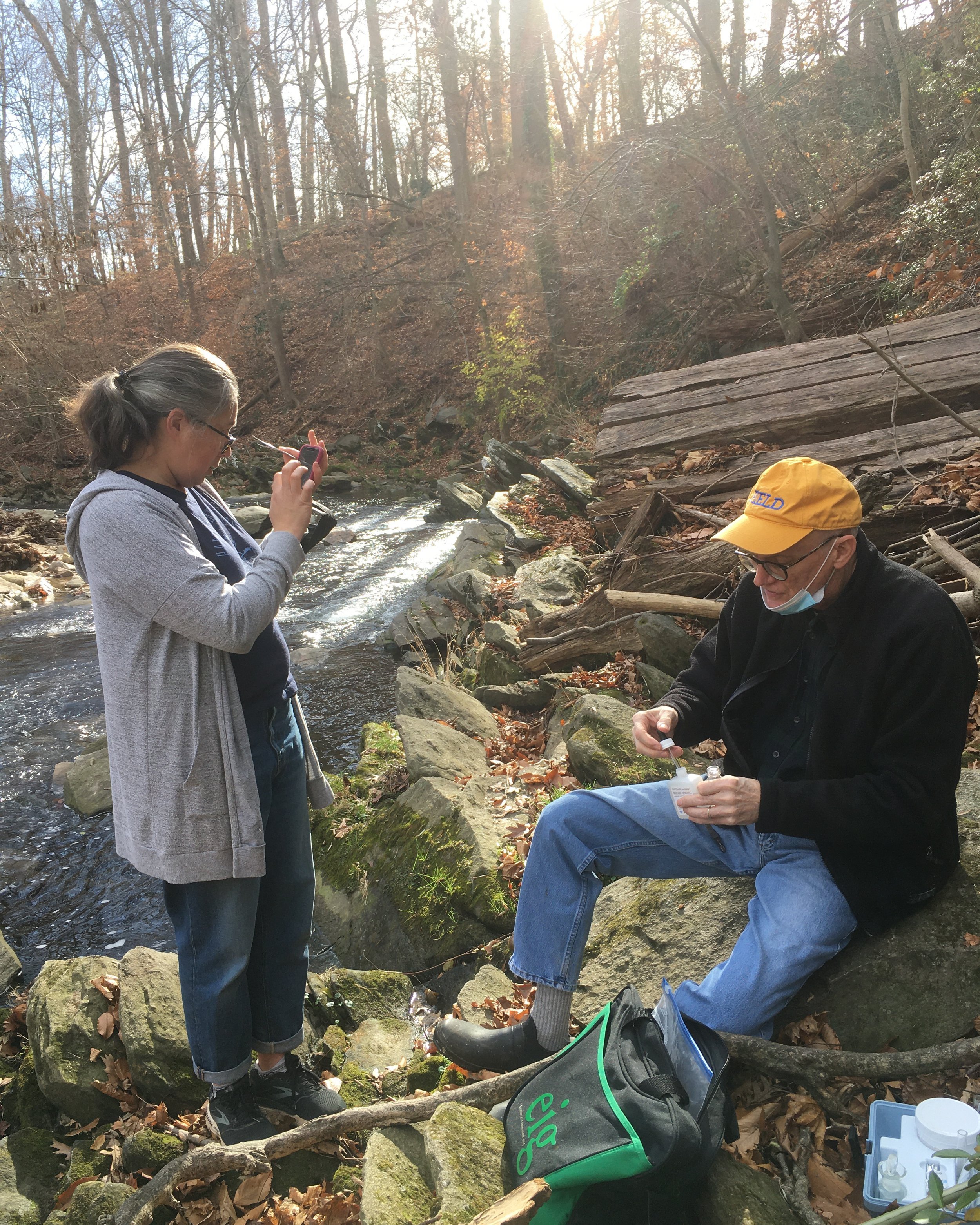LFWA citizen scientists are busy at work again, this time testing for salt pollution in our creeks. While the 3 inches of rain last weekend washed away much of the salt pollution, the baseline tests taken in mid-December showed high levels of salt - almost to the chronic level. This is alarming as the freshwater organisms who live in the creek, cannot survive when the salinity of the water gets too high. The saline levels are caused by road salt which makes its way into the creek through run-off when the salt melts.
Baseline results from December 16.
These high levels at the beginning of winter are a reminder of long lasting effects of road salt.
Just a sprinkle will do.
High baseline levels are also a reminder to keep salting to minimum on your sidewalks and driveways. We want people to be safe, but we also want healthy creeks. So read the instructions on the salt containers carefully and remember more is not better. A 12 ounce coffee cup holds enough salt to treat a 20 foot driveway! And if there is salt still on the pavement after the storm - you can sweep it up and save it for another storm.
call 311 to report salt spills
Montgomery County is committed to responsible salt treatment of public roads and sidewalks. This means removing piles of excess salt. Please, if you see piles of salt on your street or other public areas, call 311 to report. They will come out and clean it up.
More information about the LFWA Salt Watch program and Salt Wise winters HERE.
Montgomery County maintenance crew cleaning up excess salt in the Westbrook neighborhood after receiving a 311 call from a resident.




